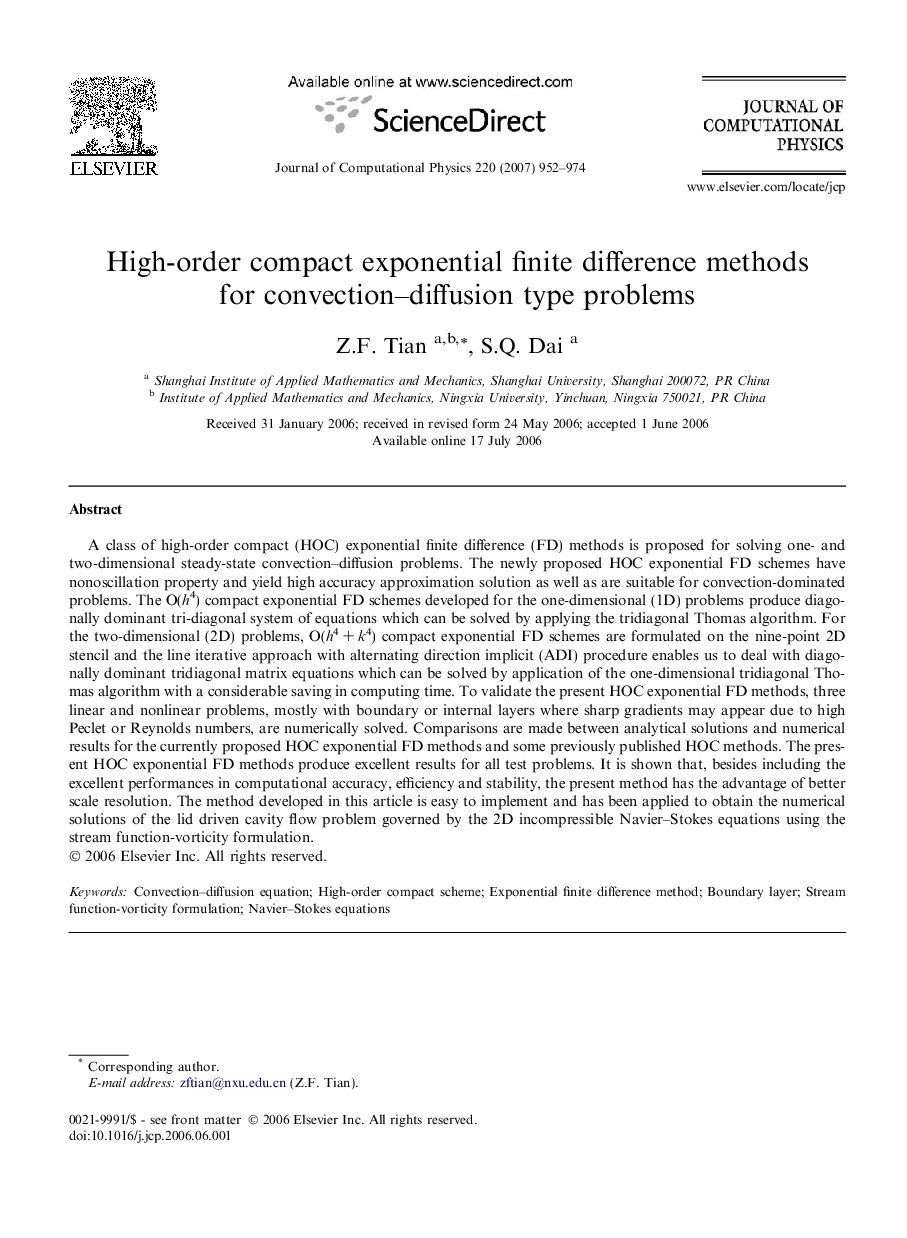| کد مقاله | کد نشریه | سال انتشار | مقاله انگلیسی | نسخه تمام متن |
|---|---|---|---|---|
| 522982 | 867889 | 2007 | 23 صفحه PDF | دانلود رایگان |

A class of high-order compact (HOC) exponential finite difference (FD) methods is proposed for solving one- and two-dimensional steady-state convection–diffusion problems. The newly proposed HOC exponential FD schemes have nonoscillation property and yield high accuracy approximation solution as well as are suitable for convection-dominated problems. The O(h4) compact exponential FD schemes developed for the one-dimensional (1D) problems produce diagonally dominant tri-diagonal system of equations which can be solved by applying the tridiagonal Thomas algorithm. For the two-dimensional (2D) problems, O(h4 + k4) compact exponential FD schemes are formulated on the nine-point 2D stencil and the line iterative approach with alternating direction implicit (ADI) procedure enables us to deal with diagonally dominant tridiagonal matrix equations which can be solved by application of the one-dimensional tridiagonal Thomas algorithm with a considerable saving in computing time. To validate the present HOC exponential FD methods, three linear and nonlinear problems, mostly with boundary or internal layers where sharp gradients may appear due to high Peclet or Reynolds numbers, are numerically solved. Comparisons are made between analytical solutions and numerical results for the currently proposed HOC exponential FD methods and some previously published HOC methods. The present HOC exponential FD methods produce excellent results for all test problems. It is shown that, besides including the excellent performances in computational accuracy, efficiency and stability, the present method has the advantage of better scale resolution. The method developed in this article is easy to implement and has been applied to obtain the numerical solutions of the lid driven cavity flow problem governed by the 2D incompressible Navier–Stokes equations using the stream function-vorticity formulation.
Journal: Journal of Computational Physics - Volume 220, Issue 2, 10 January 2007, Pages 952–974